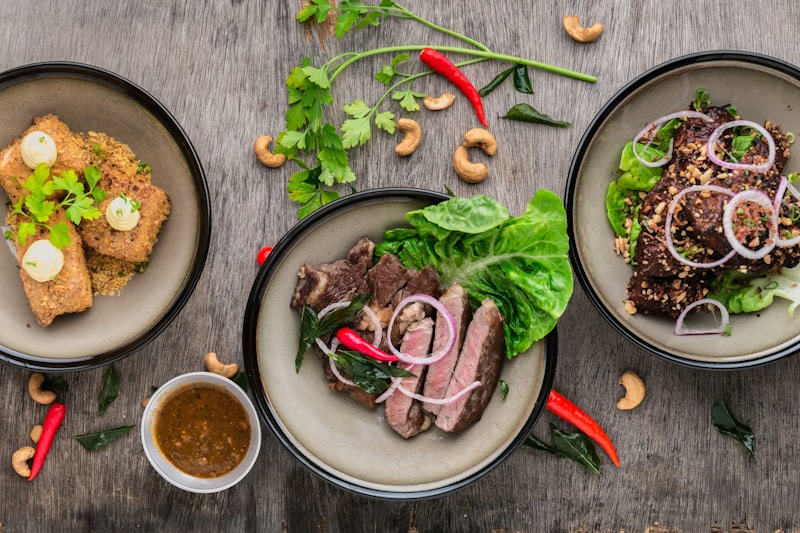July 7, 2025 – In a verdict that has captivated Australia and the world, Erin Patterson has been found guilty of three counts of murder and one count of attempted murder in the poisoning deaths of her estranged husband’s relatives with death cap mushrooms.
The 50-year-old mother blinked but appeared emotionless as four guilty verdicts were read out by the jury’s foreperson to a full court-room of onlookers. The verdict came after around six days of deliberation following a 10-week trial in Morwell, Victoria.

The Fatal Lunch That Shocked Australia
The tragic events unfolded on July 29, 2023, when Patterson hosted a lunch at her Leongatha home. She cooked beef Wellington for her in-laws Don and Gail Patterson, Gail’s sister Heather Wilkinson and Heather’s husband, Ian, at her home in Leongatha.
Within hours of the meal, all four guests became violently ill with gastrointestinal symptoms. Heather Wilkinson and Gail Patterson died on Aug. 4, and Donald Patterson died the following day from multi-organ failure caused by amanita mushroom poisoning.
Ian Wilkinson was extubated on Aug. 14 and discharged to rehabilitation on Sept. 11, becoming the sole survivor of the deadly lunch.

The Prosecution’s Case: “Four Calculated Deceptions”
Prosecutor Nanette Rogers SC built her case around what she called “four calculated deceptions” that were at the heart of the case.
“The first deception was the fabricated cancer claim she used as a pretence for the lunch invitation,” she said. “The second deception was the lethal doses of poison the accused secreted in the homecooked beef Wellingtons”.
“The third deception was her attempts to make it seem that she also suffered death cap mushroom poisoning and the fourth deception, the sustained cover-up she embarked upon to conceal the truth”, Rogers told the court.
The Cover-Up: Destroyed Evidence and Lies
The prosecution presented compelling evidence of Patterson’s attempts to conceal her actions. During eight days of testimony at Latrobe Valley Magistrates’ Court, Patterson acknowledged she repeatedly lied to police, dumped a dehydrator used to dry mushrooms, and reset her phone to delete images.
Patterson had initially denied owning a food dehydrator or foraging for mushrooms. However, Patterson said on the stand that she started foraging for mushrooms at trails and botanical gardens in her area in early 2020, and joined Facebook groups to identify and learn about the different kinds.
The prosecution argued that Patterson had the opportunity to pick lethal mushrooms after seeing their location posted on the citizen science iNaturalist website.
The Defense: “A Terrible Accident”
Patterson’s defense team, led by prominent barrister Colin Mandy SC, maintained throughout the trial that the poisoning was accidental. Defense lawyer Colin Mandy SC said Patterson accidentally added foraged mushrooms to the meal, along with ones she bought from an Asian grocer in Melbourne. “What happened was a tragedy and a terrible accident,” he said.
The defense argued that Patterson had no motive to harm her in-laws, with whom she maintained a good relationship. They suggested the poisoning resulted from a pantry mix-up between store-bought and wild mushrooms.
Key Testimony: The Fake Cancer Diagnosis
A crucial element of the prosecution’s case centered on Patterson’s deception about having cancer. In court on Thursday, Patterson acknowledged that she had misled Gail about the lump on her elbow in the weeks before the lunch, and didn’t have medical issues to communicate either to her guests or her kids.
Ian Wilkinson, the sole survivor, testified that Patterson had told the group she wanted to discuss her cancer diagnosis and seek advice on whether to tell her children.
Media Frenzy: “Australia’s Trial of the Century”
British current affairs magazine The Spectator described Patterson’s murder trial as Australia’s “trial of the century,” observing that media coverage of the trial drew media and public attention away from the aftermath of the 2025 Australian federal election.
The case generated unprecedented media attention, with notable media productions featuring the case included a Stan documentary series, the Australian Broadcasting Corporation’s Mushroom Case Daily, the Herald Sun’s The Mushroom Cook: The Trial and Nine Entertainment’s The Mushroom Trial: Say Grace podcast series.
The Verdict and Its Implications
The jury of seven men and five women took seven days to reach their verdict following a trial in the town of Morwell, in south-east Victoria, that lasted about nine weeks.
In delivering the guilty verdict, the jury was satisfied Erin Patterson had complete control over the ingredients that went into the meal portions served to her guests – portions that included death cap mushrooms.
Legal experts suggest the strength of the circumstantial evidence made the verdict unsurprising. The circumstantial evidence in this case, according to the prosecution, included the attempted hiding of a tainted dehydrator, the doubt cast over whether an Asian grocer was the source of the poisonous mushrooms, and the fact that Erin Patterson’s meal portion was free of the deadly ingredient.
What Happens Next
The 50-year-old mother of two is facing life in prison over the events of July 2023 and will be sentenced later. The maximum sentence for murder in Victoria is life imprisonment. This does not necessarily mean life in prison, for the minimum non-parole period is 30 years.
She will return to the court for a pre-sentence hearing later this year.

A Community Forever Changed
The small town of Leongatha, with a population of just under 6,000 people, has been forever marked by this tragedy. What began as a family lunch in July 2023 has concluded with one of Australia’s most shocking criminal convictions.
The case serves as a grim reminder of the deadly nature of death cap mushrooms, which contain amanita toxins that prevent the production of proteins in liver cells, leading to cell death and possible liver failure from about two days after consumption.
As Australia processes this verdict, questions remain about how such a tragedy could occur within a seemingly ordinary family gathering, leaving three people dead and a community searching for answers.














